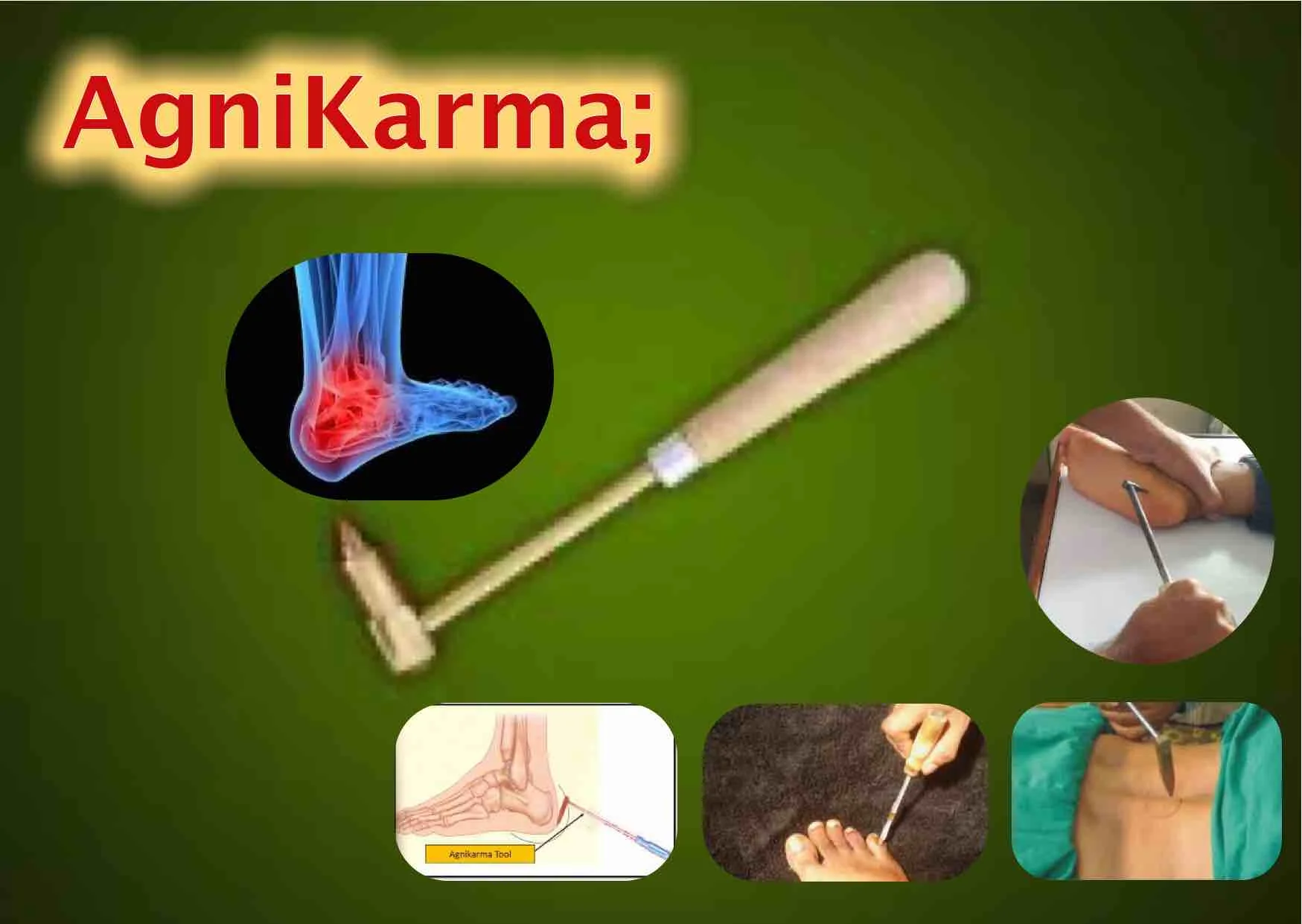
Agnikarma in Ayurveda is a para-surgical procedure used by the Ayurveda department at GS Ayurveda Medical College & Hospital to treat diseases such as arthritis and hemorrhoids. The process of Agnikarma involves using intentional therapeutic heat burns to cure certain diseases. Sandhigata Vata and Osteoarthritis are the two primary indications of Agnikarma. This procedure involves burning a specific skin area with an ointment prepared from herbal sources to induce scarring, which helps relieve joint pain and stiffness. The department also employs other para-surgical methods, such as Ksharakarm and Shastrakarma, to treat such conditions.
Ksharakarma and Agnikarma form the very base of this proclaimed organization. The researchers and successful treatments concluded prove that Agnikarma, along with other internal Ayurvedic medicines, is an effective treatment for hemorrhoids with no adverse effects.
Agnikarma is an ancient medical technique derived from the Indian system of drugs, Ayurveda. The method involves applying heat to the affected areas of the body using a metal shalaka (metal rod). Therapeutic burns are created using these metal rods, supported by specialist data in a range of areas, such as the disorder, the constitution of the patient, etc.
The department’s practice of Agnikarma has proven beneficial in treating musculoskeletal disorders of patients from the state and neighboring areas. The highly skilled doctors at the hospital treat over 20 patients suffering from Janu Sandhigata Vata (OA of the knee joint) every day. The department conducts continuous research to study the efficacy of Ksharakarm and Agnikarma in the treatment of Osteoarthritis (OA), which has resulted in the mass production of proficient BAMS and MD doctors.
The department also practices Ksharasutra, which involves using a unique instrument to make a small incision into the affected area, allowing the application of a paste made from medicinal herbs, which helps reduce inflammation and improve circulation. It also reduces pain and discomfort associated with hemorrhoids. Sometimes, Ayurvedic practitioners may recommend surgical intervention to remove large or persistent hemorrhoids. However, for most patients, Ksharasutra procedures have been highly effective in treating hemorrhoids with fewer risks than surgical procedures.
This effective medical treatment of Ksharakarm includes a procedure in which an alkaline caustic paste is used to treat bleeding piles. Agnikarma is another Ayurvedic treatment that Ayurvedic practitioners at the department use to treat hemorrhoids, which involves a very acidic agent. It comprises applying a burning hot iron rod over the affected area and can relieve the symptoms of hemorrhoids.
Ksharakarm and Agnikarma are two of the most common treatments GS Ayurveda Medical College & Hospital uses to deal with pain in patients. These treatments help reduce pain sensation and other symptoms associated with piles, such as constipation and sickness. Obstructing the passage of stools can deteriorate a patient's condition. Using Agnikarma, heat applies to the affected area to aid defecation and relieve pain in the anal canal. In addition, Ksharakarm helps promote regular patient daily activities by providing relief from piles within a few days because of its anti-inflammatory properties.
The counselors and Ayurvedic practitioners available in the hospital provide the patients with the best approach to evaluate their diagnosis and provide effective monitoring for quick recovery. They consider factors such as the patient's overall health and dominant dosha to make treatment suggestions.